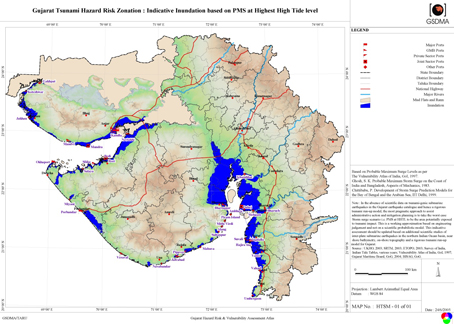Do’s and Don’ts pertaining to Tsunami 
|
| |
| • |
A Tsunami is a very large ocean wave triggered by underwater earthquakes, volcanic activities or landslides. These waves have unusually long wavelengths (typically in excess of 100 Kms.) generated in the open ocean and transformed into a train of catastrophic sea surface oscillations close to coastal zones. |
| • |
Tsunamis are harmless in the open ocean because of their small wave height (typically 30-60 cms.). Typical speeds in the ipen ociean are of the order of 600 to 800 km/hr. the tsunami’s energy flux, dependent on its wave speed and wave height, remains nearly constant. Hence, as they rave into shallow water along continental coasts their speed diminishes. This results in increase in wave height in order to conserve total energy. |
| • |
The Tsunami risk within the Indian Ocean is quite low as compared to storm surge owing to very long return periods and the lower level of inter-plate events. Therefore, mitigative measures for protection against sea inundation due to storm surge, if suitably enhanced, could provide the most cost-effective risk mitigation measures for the region. |
| |
 |
| • |
Tsunamis are extremely rare events in Gujarat. No instrumental records or damage records are available for tsunami impact in the region. Nevertheless, tsunami impact in the Gujarat region in expected to be similar to that of the worst storm surge – which occurs at a much higher frequency. |
| • |
It is estimated that appropriate structural mitigation measures for storm surge linked to an appropriate tsunami warning system could address much of the risk associated tsunami impact to residential populations. |
| |
| |
Important Links For Furthure Information |
| |
|
| |
Indian National Centre for Ocean Information Services, GoI |
| |
CSIR-National Institute of Oceanography, Goa |
| |
India Meteorological Department, Government of India |
| |
Meteorological Centre, Ahmedabad |
| |
GSDMA Leaflets In Gujarati |
|